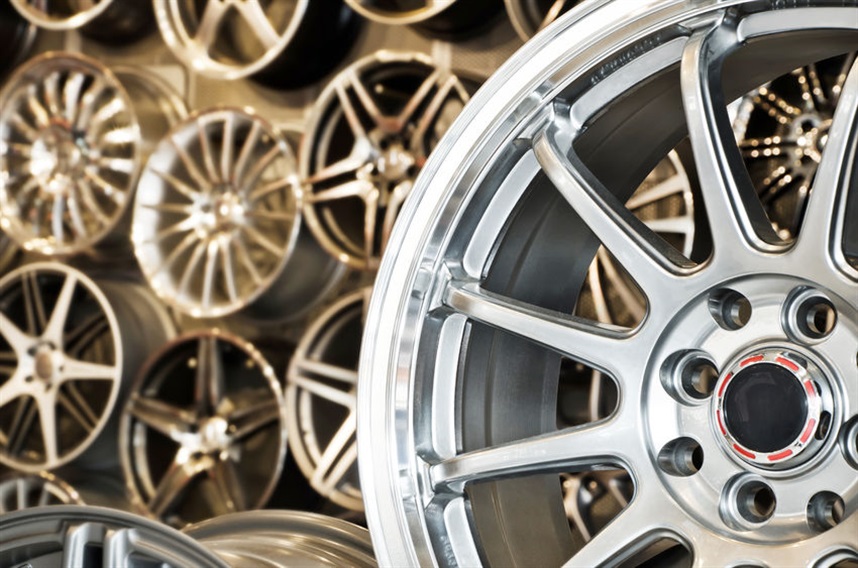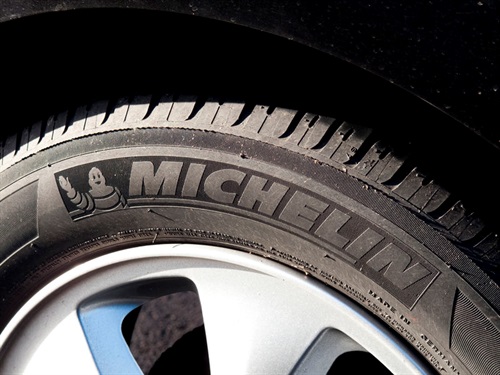10 Facts You Didn’t Know About Rims
Posted on

But our expertise is also strengthened by our knowledge of the history of rims. In fact, knowing how wheel technology has changed over time is what guides our decision-making process and helps us advise customers on which rims or wheels will best suit their needs. And, because we find the history of rims to be truly fascinating, we thought we’d share our favorite facts with you!
1. Vehicle manufacturers usually don’t make their own wheels.
It seems odd that car manufacturers wouldn’t make one of the most critical components of a car, but it’s true! Many car companies rely on wheel manufacturers, like Maxion, ENKEI, and Superior Industries, to provide them with the wheels many of us drive around on every day.
2. We have Andre Michelin to thank for modern rims.
Andre Michelin, one of the co-founders of Michelin, was working with his brother Édouard in their rubber factory one day when a cyclist with a damaged tire happened to wander in. Andre and his brother worked to repair the tire, which was glued to the rim, but found they had little luck. So they set out to build something better and designed the removable pneumatic tire in 1891. Just a few years later in 1895, the removable pneumatic tire was combined with a spoked wheel and placed on a car for the first time - and the rest was history.
3. Aftermarket wheels didn’t show up until the 1950s.
Aftermarket rims differ from OEM wheels in that they are made to fit multiple types of vehicles and are made by companies that are not affiliated with/approved by a vehicle manufacturer. The first aftermarket wheel manufacturer was American Racing Equipment. Founded in 1956, they primarily catered to the needs of street racers. Today, the majority of the rims they produce are for muscle and sports cars.
4. Alloy wheels have been around since the 1920s.
In the early days, most alloy rims were made of magnesium. While sturdy, this was an expensive material, which is why they weren’t widely used early on. In the late ’60s however, manufacturers learned new casting techniques that allowed them to make aluminum alloy rims safer (and cheaper) than ever before. This caused alloy wheels to gain popularity by the ’80s which is why, even though they were invented nearly 100 years ago, we tend to think of alloy wheels as being a newer invention. Now, alloy wheels are included on nearly all new cars.
5. Alloy rims can be made out of aluminum or magnesium
Magnesium rims are nice because they are much lighter than aluminum rims, which translates to better gas mileage/fuel economy. Aluminum wheels may be a little heavier, but they’re much more durable and much less expensive to produce than magnesium wheels are. Most new cars are outfitted with aluminum wheels, but aftermarket magnesium wheels are widely available. At the end of the day, whichever you choose is really up to your personal preference!


6. Steel rims and alloy rims both have their advantages.
Most early cars, really all cars up until the ’80s, were outfitted with steel wheels. A number of people still prefer steel rims today, and it’s easy to see why, given that they’re cheap and sturdy. That said, alloy wheels offer lighter, easier handling, better gas mileage, and a smoother ride. Both types of rims can be damaged, which can result in steering wheel shake and a whole host of other dangerous scenarios. Fortunately, the technicians at RGX Rim Repair have experiencing straightening steel and alloy rims!
7. Cleaning your rims is really important.
Even the highest quality rims can corrode if they aren’t properly cared for. Two of the most common culprits of rim corrosion are brake dust and the tiny metal shavings that can come off your brake rotors. The good news is that keeping your rims clean is really simple. All you have to do is wipe them down with a gentle sponge and your favorite liquid or clay-based cleaner. You can also consider getting chrome plating for your rims, as it can provide a protective layer that also looks super cool!
8. Rim size doesn’t just affect looks, it affects performance.
It’s no secret that tires affect your car’s performance, but few people know that rims can, too. Smaller rims means there’s more rubber between you and the road, which ultimately translates to a quieter and smoother ride. By contrast, larger rims means less rubber and more friction, which means greater rolling resistance. The higher your rolling resistance is, the more energy (a.k.a gas) your car has to use to get moving and keep moving.
9. There is such a thing as fake rims!
There are replica wheels and then there are pirated wheels. Yep, that’s right, there are people out there who make and sell fake versions of OEM and aftermarket rims. The danger here is that these fake wheels may look like the original manufacturer’s design, but they have not been produced with the same safety standards in mind. Make sure that you’re buying wheels from a reputable source!
10. Your rims’ lifespan is up to you.
You are the only person who can affect how long your rims last. If you drive recklessly and don’t take good care of your rims, you may find yourself replacing them pretty often. However, if you keep them clean, avoid potholes and debris, and are careful when parking, you should have no problem avoiding rim damage.
Remember, whether you need your wheels repaired or want to customize your rims, RGX has you covered at any of our North Carolina rim repair shops. Schedule your appointment or request an estimate for rim repair by calling 888-775-RIMS.
